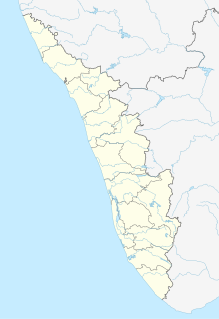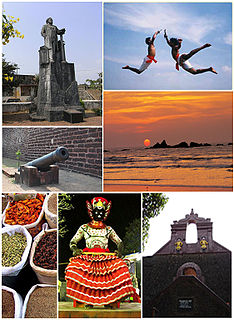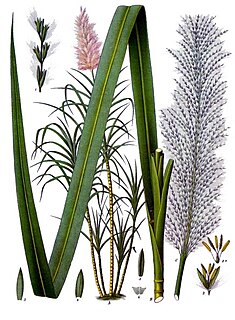History
In the heart of Thalassery stands the 200-year-old Odathil Palli and the Garden Mosque. The site of the Odathil Palli used to be a sugarcane garden of the Dutch. It changed hands to the British-owned East India Company.
Moosakaka, a Muslim Keralite, was the contractor of the East India Company. Moosakaka hailed from the Keyi family of Thalassery. The Keyis were among the prominent traders of the time.
Chovvakkaran Moosa was a wealthy Indian pepper merchant and ‘Moghul Baig’ of southern India, who died in Thalassery in 1807. He is also known, more parochially, as 'Moosakakka Keyi'.
Keyi, are one of the several denominations among Muslims of Kerala, India. The Keyis are known for their immense wealth and land properties acquired through trade with the English East India Company. The Keyi family has its roots in Thalassery, Kannur district. Keyis only marry from another Keyi family and are noted for their matrilinear system of inheritance.
Moosakaka was considered to be very honest and trustworthy. Hence, the company wanted to reward him for his loyalty. As per his request, he was given the Dutch sugar garden. Musakaka bought this land for a small price, as he did not want it free.
This page is based on this
Wikipedia article Text is available under the
CC BY-SA 4.0 license; additional terms may apply.
Images, videos and audio are available under their respective licenses.

Mananthavady is a municipality and taluk in the Wayanad district of Kerala, India.The town is located on the banks of Mananthavady River, a tributary of the Kabini River. Mananthavady has been referred to as "Hosenkadi" in a dictum scribbled under a copper artefact found at the Ananthanathaswamy Temple at Varadoor. The dominant view on the etymology is that the word is derived from "Mane Eytha Vady ". This view is strengthened by the existence of a place called Ambukuthy, literally the location where the arrow pierced, on the outskirts of the town. This area was once ruled by the Pazhassi dynasty and the tomb of Pazhassi Raja is an important heritage site located in the heart of the town. Mananthavady was a major army camp for the British during their campaign against Pazhassi. One can still see the vestiges of the colonial period - canteen, club, barracks, rest house, cemetery - around Mananthavady. This is also the headquarters of the Adivasi Gothra Mahasabha. The District Hospital in Mananthavady is the only major treatment facility for the service of the tribal communities and other less privileged sections of Wayanad.

Masjid Jamae (Chulia) or Jamae (Chulia) Mosque (Jawi: (مسجد جامعة is one of the earliest mosques in Singapore, and is located on South Bridge Road in the Chinatown district within the Central Area. The mosque was established in 1826. This mosque is also known as Chulia Mosque and Periya Palli among the Tamil Muslim community in Singapore. Together with its neighbour, Sri Mariamman Temple, the mosque stands out in its predominantly Chinese location. The Mosque Street that runs beside it may have been named after this mosque.

Iritty is a municipality and a taluk in the district of Kannur in the state of Kerala, India. The town is the main market place for the farmer communities in the surrounding regions. Iritty is known as The Coorg Valley in God's Own Country. Iritty is one of the fastest upcoming towns in Kerala with the distance of 18 KM from Kannur International Airport and one among five taluks in Kannur district.Iritty is one of the major towns lies between Coorg and Kannur international airport -Mattanur.

Tellicherry Fort is in Thalassery (Tellicherry) a town in Kannur District of Kerala state in south India. Tellicherry was one of the most important European trading centers of Kerala. The Fort lies on the group of low wooden hill running down to sea and protected by natural waters. It has been the main opening for the rich spices, hill products and timber of the vast inter-land.

No

Tanur is a small town in the Tirur tehsil, Malappuram district of Kerala state, located on the coast 9 kilometres (5.6 mi) north of Tirur. Its ancient name was Tyndis.
Chempittapally is an old mosque in West Kochi in Kerala State, India. The name "Chempittapally" is derived from the Malayalam word "chemp" and "palli". The roof of this famous mosque was decorated with bronze tiles, hence chempitta pally. The compound has 3 gates; one in west which opens way to Panayapilly, second in south which opens way to Goldenmukku and Kochangadi, and the main gate in the eastern side of compound, which opens way to Angadi, which in turn leads the way to Jew Street and Mattancherry Bazaar towards the north and to Chullickal towards south.

Pappinisseri is a census town in Kannur district in the Indian state of Kerala. Pappinisseri Panchayat comprises two villages viz Pappinisseri and Aroli. Pappinisseri better known for visha chigilsa kendram

Wandoor is a town in Malappuram district of Kerala, India at
11°11′44″N 76°14′09″E. It is located 20 km away from Manjeri

Kannavam is a small Village/hamlet in Thalassery Taluk in Kannur District of Kerala State, India. It comes under Chittaripparamba Panchayath. It belongs to North Kerala Division. It is located at 36 km towards East from District head quarters, Kannur; 12 KM from Kuthuparamba and 466 KM from State capital Thiruvananthapuram
There are places of worship considered important in the Kannur district. Kannur District is one of the 14 districts in the state of Kerala, India. The town of Kannur is the district headquarters, and gives the district its name.

Muchundi Mosque is a mosque located at Kuttichira, within in the city of Kozhikode (Calicut) in the Indian state of Kerala. Kuttichira is the medieval Muslim quarter in the city of Calicut. It is situated south of Mishkal Mosque, Kuttichira Tank and the Kuttichira Jum'ah Masjid. The mosque does not conduct the jum'ah prayers – the special noon service on Friday that all adult, male, free Muslims are obliged to attend.

Palaiya Jumma Palli or Meen Kadai Palli is a mosque in Kilakarai, Tamil Nadu, India. Built in 628-630 AD, it is believed to be one of the oldest mosques in the world and along with Cheraman Juma Masjid in Kodungallur, Kerala, the first mosque in India. It has an Islamic heritage of more than 1000 years. It is located in Kilakarai, an ancient port town in the South Indian state of Tamil Nadu known for its Islamic culture. It was built in 628–630 AD and was re-constructed in 1036. The mosque along with the others in the town, is one of the greatest examples of Dravidian Islam architecture.

Thengapattanam, named after dense coconut grooves, is a major trade and tourism centre in the painkulam panchayath along the coastal plains of Kanyakumari district. Thengapattanam, once part of Travancore and later Kerala, was bequeathed upon to Tamil Nadu on 1 November 1956 along with some parts of today's Kanniyakumari District.
Madayi Mosque is mosque at Pazhayangadi in Kannur district, northern Kerala. It is one of the oldest mosques in Kerala, with local legends dating back to 7th century AD. It is believed to have been established by Malik ibn Dinar and contains a block of white marble said to have been brought from Mecca by ibn Dinar. It is one of the several mosques around Pazhayangadi/Payangadi. It is situated on the banks of Kuppam River, which joins Valapattanam River at its estuary.
Kannur has a number of tourist attractions including beaches, hills, temples and other monuments.
The Thalassery carnival, the Beach fest in Muzhappilangad beach and Dharmadam beach are notable attractions. The area's four rivers around Thalassery town and four beaches with more in Kannur also attract visitors.




















